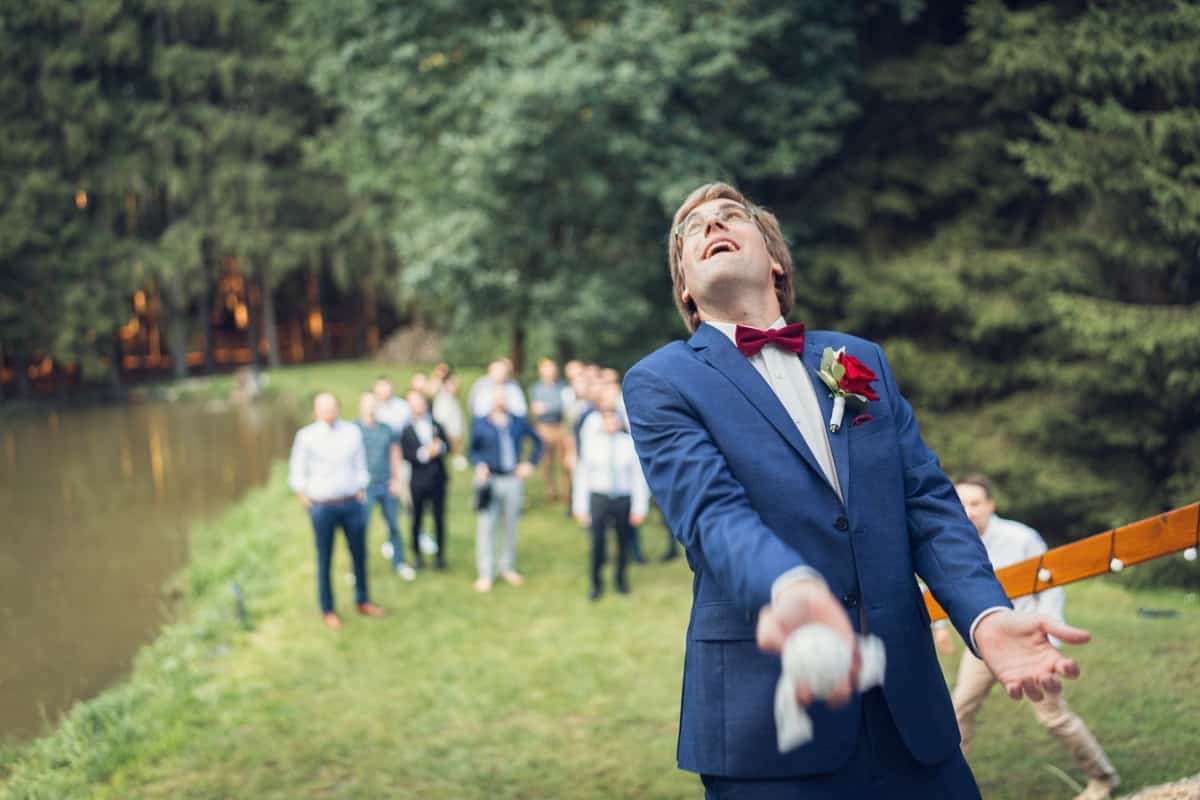The garter toss is one of the most recognizable and sometimes debated traditions in modern weddings. Originating from a custom steeped in history, it has evolved into a playful, often lighthearted part of the wedding reception.
Let’s explore the origins, significance, and ways to adapt the garter toss. We’ve laid out answers to all the top questions about wedding garters, making it easy for you to choose what feels right for your celebration.
Origin and Meaning of the Garter Toss Tradition
The garter toss, a tradition now synonymous with modern weddings, has its roots in a much older custom. Tracing back to the 14th century, the tradition began in Europe. It was believed that owning a piece of the bride’s attire would bring good luck, leading to guests trying to obtain a piece of her dress. To avoid this often aggressive pursuit, the garter toss was created as a more civil way for the bride to share her good fortune.
Over the centuries, the tradition evolved. In medieval England, the groom would remove the garter and toss it to the unmarried men, with the belief that the catcher would be the next to marry. This was similar to the bride’s bouquet toss, a parallel tradition for unmarried women.
Historical context
The wedding garter itself has held various symbolic meanings throughout history. Initially, it was a symbol of the newlyweds’ consummation of their marriage, with the groom sometimes showing the garter as proof. In modern times, the significance has shifted to a more lighthearted symbol of love, luck, and the transition to married life.
Modern Meaning of the Garter Toss Tradition
In contemporary weddings, the garter toss is often seen as a playful interaction between the couple and their guests. It provides a moment of entertainment and continues the tradition of bestowing luck, albeit in a more modern and less superstitious manner.
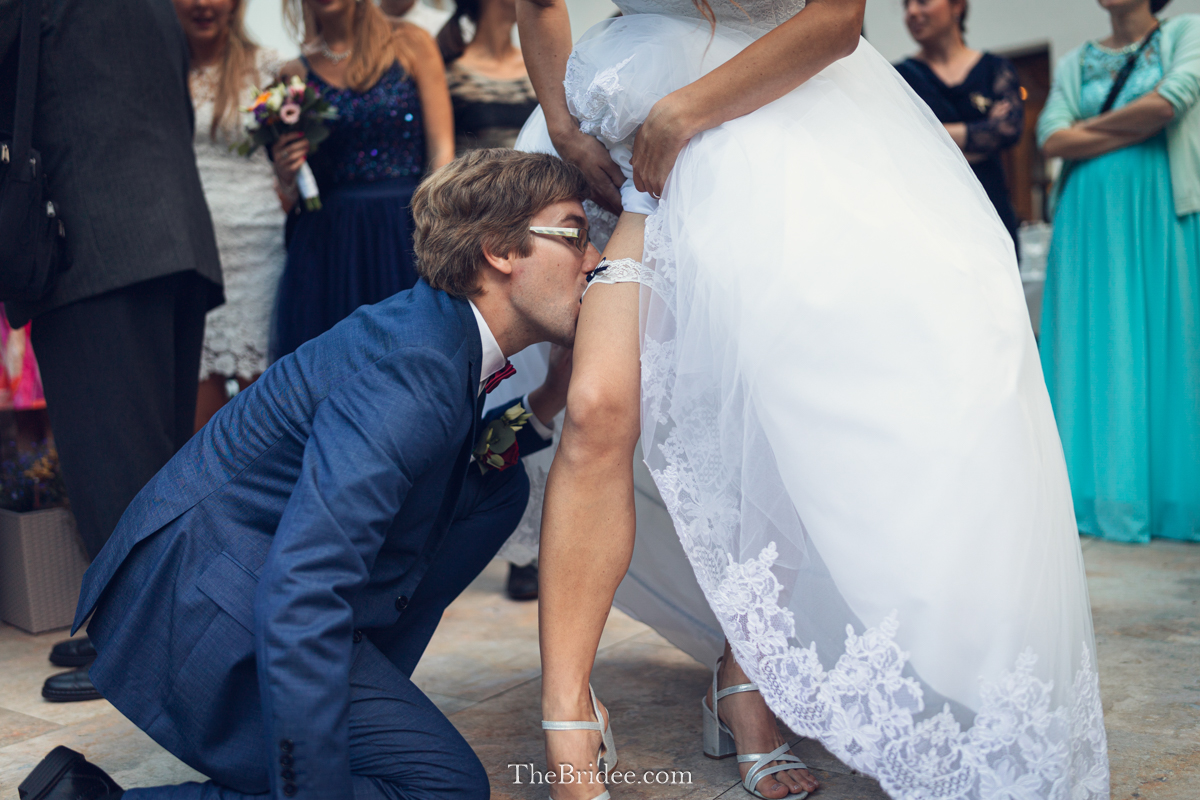
When and How Does the Garter Toss Happen?
Typically, the garter toss occurs during the wedding reception, often after the bouquet toss. The bride sits on a chair while the groom kneels to remove the garter from her leg, sometimes with his hands or, in a more humorous twist, with his teeth.
The gathered unmarried men stand at a distance, and the groom tosses the garter over his shoulder to them. The man who catches the garter is often teased as being the next to marry.
What Happens if You Catch the Garter?
Catching the garter at a wedding, according to tradition, signifies that the person who catches it will be the next to marry. This belief is parallel to the tradition of catching the bride’s bouquet, which is generally aimed at unmarried women.
When someone catches the garter, it usually leads to a light-hearted moment at the reception. This can involve:
- A photo opportunity with the bride and groom.
- Sometimes, the person who catches the garter is encouraged to place it on the leg of the person who catches the bouquet, although this is becoming less common and is entirely optional, based on the comfort level of the participants.
- A round of applause or cheers from the other guests.

Best Garter Toss Songs
Choosing the perfect song for the garter toss can elevate this playful moment to an unforgettable highlight of your wedding reception.
Here is a short list of the most popular Garter Toss Songs:
- “SexyBack” by Justin Timberlake
- “I’m Too Sexy” by Right Said Fred
- “Oh, Pretty Woman” by Roy Orbison
- “Mission Impossible Theme” by Lalo Schifrin
- “Another One Bites the Dust” by Queen
- “You Sexy Thing” by Hot Chocolate
- “Can’t Stop the Feeling!” by Justin Timberlake
To help you find just the right track, we’ve compiled an extensive list of 101 garter toss songs, ranging from classic hits to modern chart-toppers, ensuring there’s something for every couple’s taste.
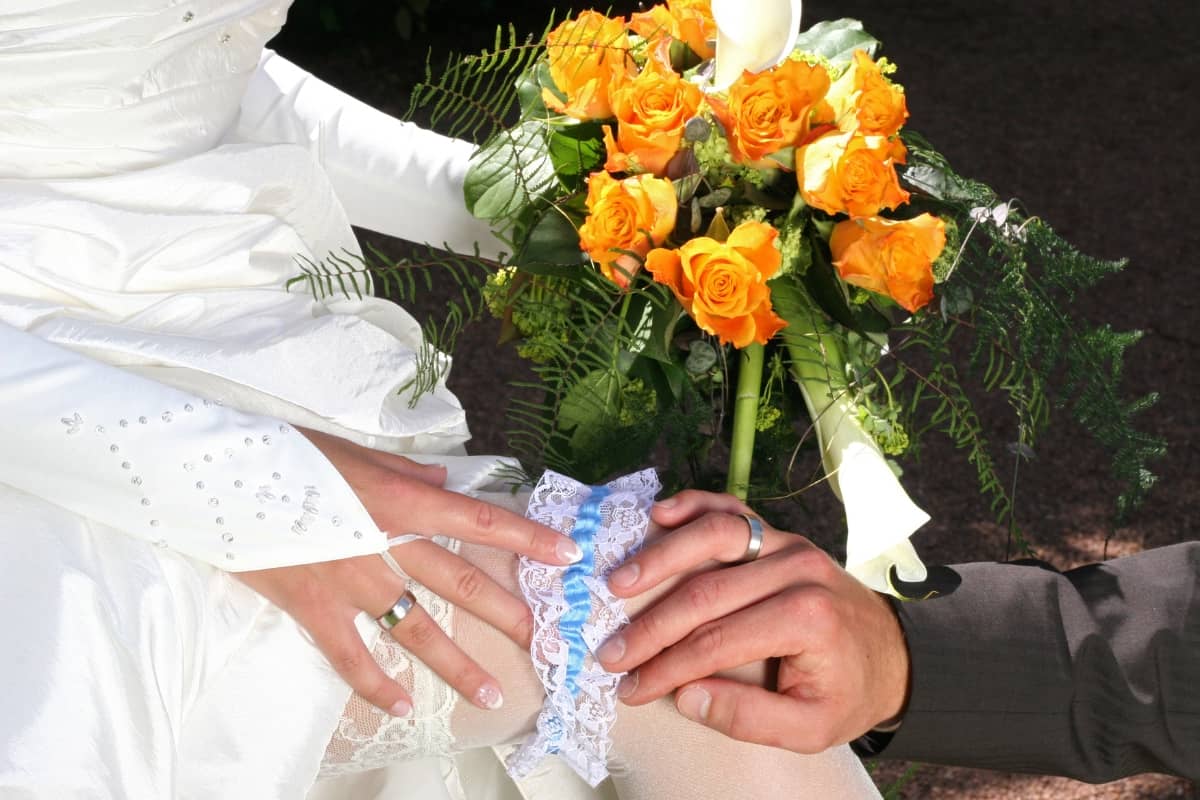
Great Garter Toss Alternatives
For couples looking to modernize their wedding or for those who feel the traditional garter toss doesn’t align with their values, there are several creative replacements.
- Anniversary Dance: In this alternative, all married couples are invited to the dance floor. The DJ gradually asks couples to leave the floor based on the length of their marriage until the longest-married couple is left. They can be presented with a bouquet and a small gift instead of the garter toss.
- Couple’s Trivia Game: Turn the time into a fun game where all guests can participate. Ask trivia questions about the couple, and the guest who answers the most questions correctly could receive a garter.
- Musical Chairs or Dance-off: For a fun and engaging activity, organize a game of musical chairs or a dance-off for your guests. The winner can be awarded with a garter or small prize.
And that is not it, find out about more ideas here: 21 Brilliant Garter Toss Alternatives.

Garter Toss Games
Adding a unique twist to the traditional garter toss can make your wedding reception more engaging and memorable. Here are some fun and inventive garter toss ideas:
- Blindfold Spun: Create a suspenseful moment by blindfolding the groom and playing a song like “Mission Impossible” during the garter retrieval. Spin him around before he tosses the garter to a circle of waiting single men.
- The Winners’ Dance: Have the recipients of the garter and bouquet, typically the next ‘lucky’ ones to marry, share a celebratory dance.
- Garter Dance Off: The groom must dance to win approval from the bride before retrieving the garter. The bride gives a thumbs up or down, and upon approval, the groom can then find the garter and toss it.
- Piñata Garter: Place the garter in a piñata filled with glitter, candy, or other small items. Blindfolded guests take turns hitting the piñata to release the garter.
- More Than a Garter: Add humor by hiding amusing items under the bride’s dress, such as a rubber chicken or a stuffed animal, before the groom finally discovers the garter.
- Garter Auction: Instead of tossing the garter, auction it off to the highest bidder, with proceeds going to the couple’s honeymoon fund or a charity of their choice.
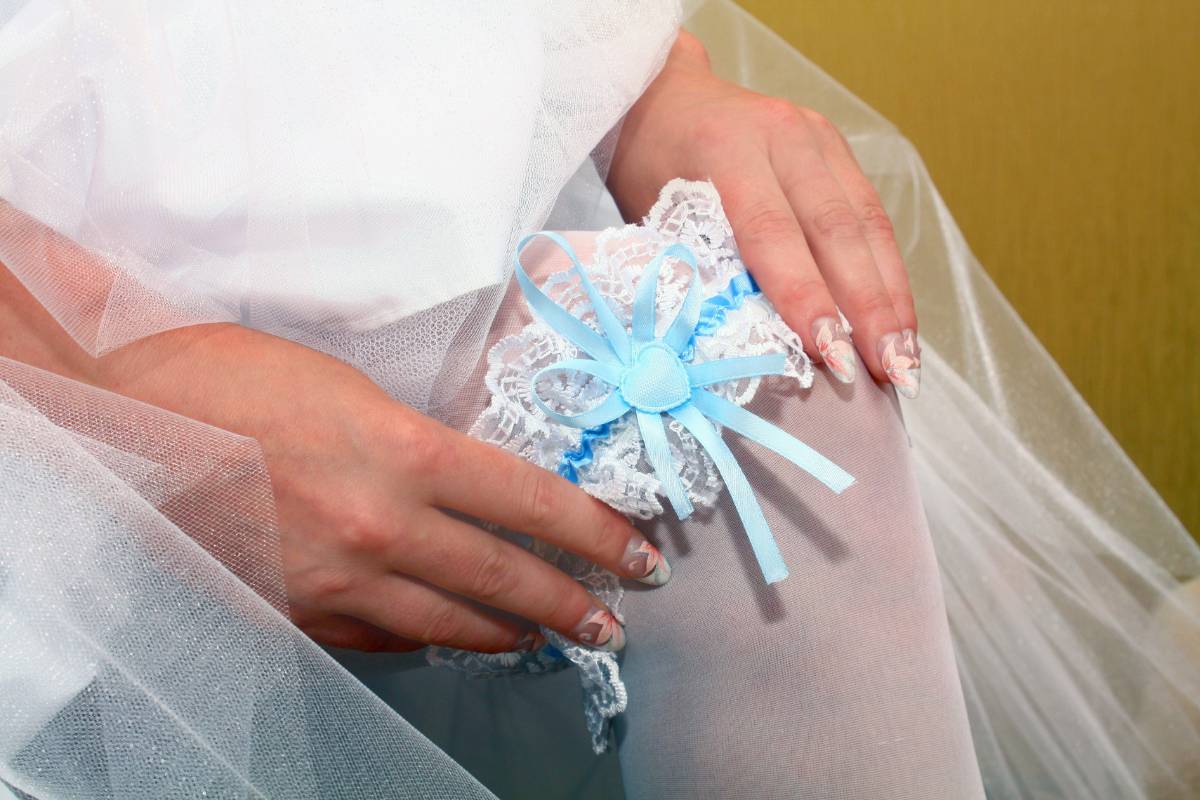
Is Garter Toss Still a Thing?
In some regions, especially in the United States, the garter toss remains a common part of wedding receptions. However, its prevalence can vary significantly in other parts of the world.
Considerations
The garter toss, for some, may feel outdated or at odds with modern sensibilities, especially regarding the objectification of women or the comfort of guests. Couples today are more aware of these aspects and often make choices based on what feels appropriate and enjoyable for themselves and their guests.
Alternatives
Many couples are opting for alternative activities that are inclusive and align with their values. This could range from different types of entertainment to charity-driven activities or interactive games for guests.
Regional variations and cultural differences
The way the garter toss is conducted can vary significantly across different cultures and regions. For instance:
- In the United States: The garter toss is a standard feature in many weddings, often accompanied by specific songs and a cheer from the guests.
- In the United Kingdom: The tradition is less common and, when included, is usually more subdued compared to the American version.
- In other parts of Europe: Some countries may not practice the garter toss at all, or it might be included in a different form.
- In Canada and Australia: These countries often follow a similar pattern to the United States, but with regional variations in how the toss is conducted.
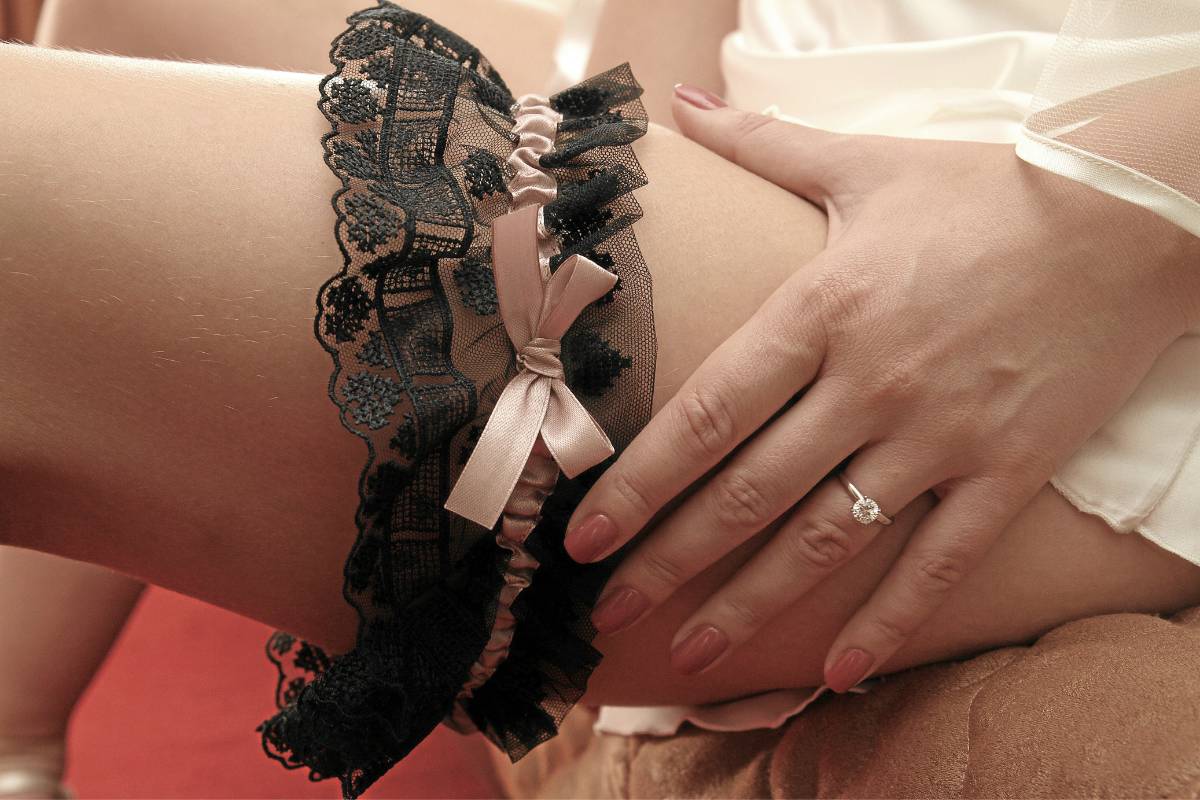
Garter Toss Controversy
The garter toss in weddings, a tradition where the groom removes a garter from the bride’s leg and tosses it to unmarried male guests, has sparked debate regarding its appropriateness and relevance in modern weddings. This controversy is grounded in differing perspectives on tradition, symbolism, and values.
Is the garter toss inappropriate?
Some view the garter toss as outdated or sexist, feeling that it objectifies the bride or puts undue attention on her in a potentially uncomfortable way. The act of the groom removing the garter from the bride’s leg in front of family and friends can be seen as inappropriate or embarrassing.
Ultimately, the decision to include a garter toss depends on the comfort level of the bride and groom, as well as their guests. What might be seen as a fun and harmless tradition in one context could be viewed as inappropriate in another.
Some couples who like the idea of the tradition but are mindful of its potential issues choose to modify the garter toss. This could include the groom not suggestively removing the garter or the couple deciding to toss a garter that is not worn but rather carried or presented differently.
What is the point of a garter?
A garter is a narrow band of fabric, often elastic, that is typically worn around the thigh. Traditionally, garters were used to hold up stockings in the era before elastic fabrics and modern hosiery were common.
In the context of weddings, the bridal garter has evolved into a symbolic item. It’s seen as a token of good luck and is often incorporated into the wedding as part of the garter toss tradition.
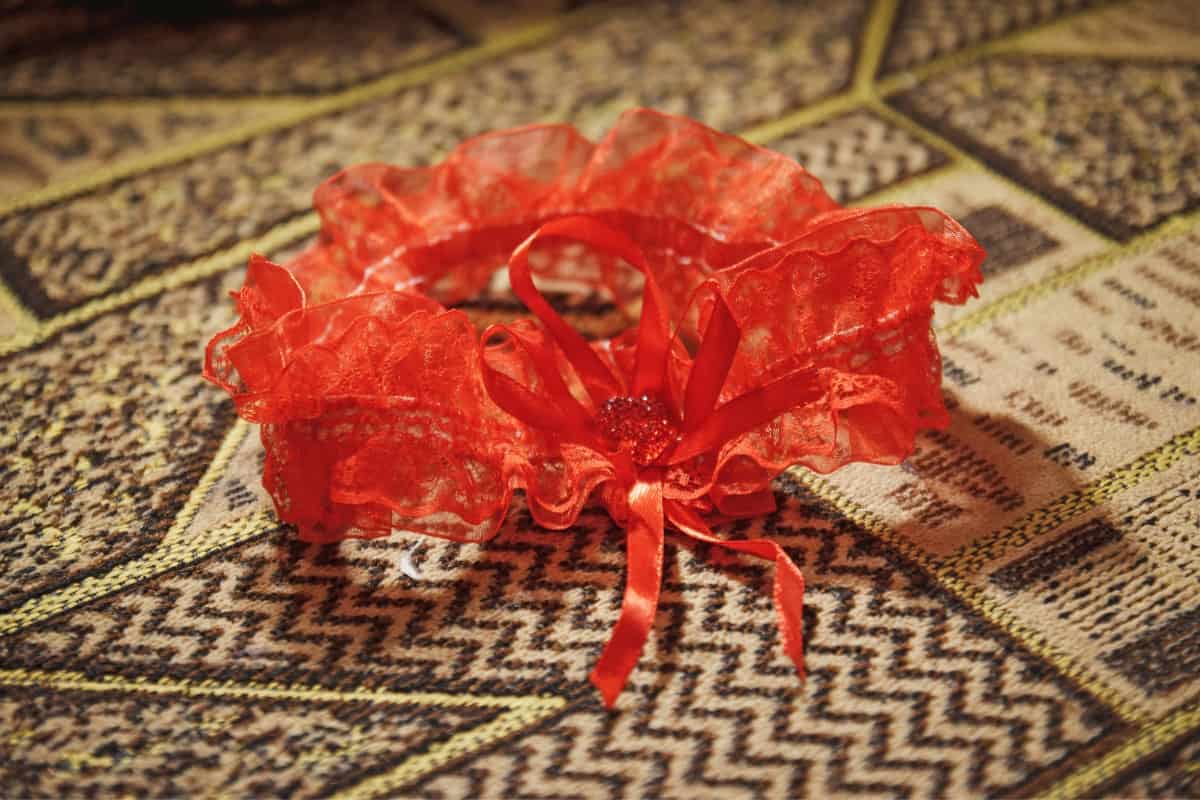
Pros and Cons of Including the Garter Toss
Reasons some couples choose to include it:
- The garter toss can be a fun and lively part of the reception, providing entertainment for guests and creating memorable moments.
- The garter toss often yields playful and candid photos, capturing the joy and spontaneity of the wedding.
- Like the bouquet toss, it’s a way to involve unmarried guests in a wedding tradition.
- Couples have the opportunity to personalize this tradition, making it a unique reflection of their relationship and style.
Concerns or reasons why others might opt out:
- Some couples or guests might find the tradition embarrassing or inappropriate, particularly the aspect of removing the garter in public.
- Others view the garter toss as a relic of past customs.
- In some cultures or family backgrounds, the garter toss might be seen as disrespectful or not in keeping with the tone of the event.
- As trends evolve, some couples might opt for newer traditions that better reflect their personalities and the modern spirit of marriage.

More Questions about the Wedding Garter
Who Buys the Wedding Garter?
The wedding garter can be purchased by anyone. Often, the bride selects it to complement her dress, or it may be gifted by the spouse-to-be or crafted by bridesmaids. It can also be an heirloom from a mother or grandmother or made from a family wedding dress.
What Is the Cost of Wedding Garters?
Prices for wedding garters range from $10 to $150. The average cost is $20 to $40, especially for designs in lace, silk, or chiffon. For those who are crafty, creating a garter or repurposing an heirloom can be a cost-effective option. If you are planning to have two garters—one to keep and one to toss—consider this in your budget.
Which Leg to Wear the Garter On?
There’s no specific leg required for the garter. It’s typically worn on mid-thigh, and if wearing two, they’re placed on the same leg. Ensure your partner knows which leg and which garter to toss.
Do You Need to Wear the Garter All Day?
Wearing the garter all day is totally up to you! Some brides wear it throughout the day, while others put it on for the “getting ready” photoshoot and the garter toss at the reception. It can be stored away during other parts of the celebration.
Conclusion
As you plan your wedding, remember that the garter toss is just one of many traditions you can choose to include, modify, or omit.
The most important factor is that your wedding day reflects your unique relationship, values, and style. If the garter toss resonates with you, there are countless ways to tailor it to your celebration. If not, numerous alternatives can enrich your wedding experience and engage your guests.
Read also:
- 21 Brilliant Garter Toss Alternatives (Funny, Cool, Trendy)
- 101 Best Garter Toss Songs (Funny, Modern, Traditional)
Pin garter toss tradition on Pinterest:
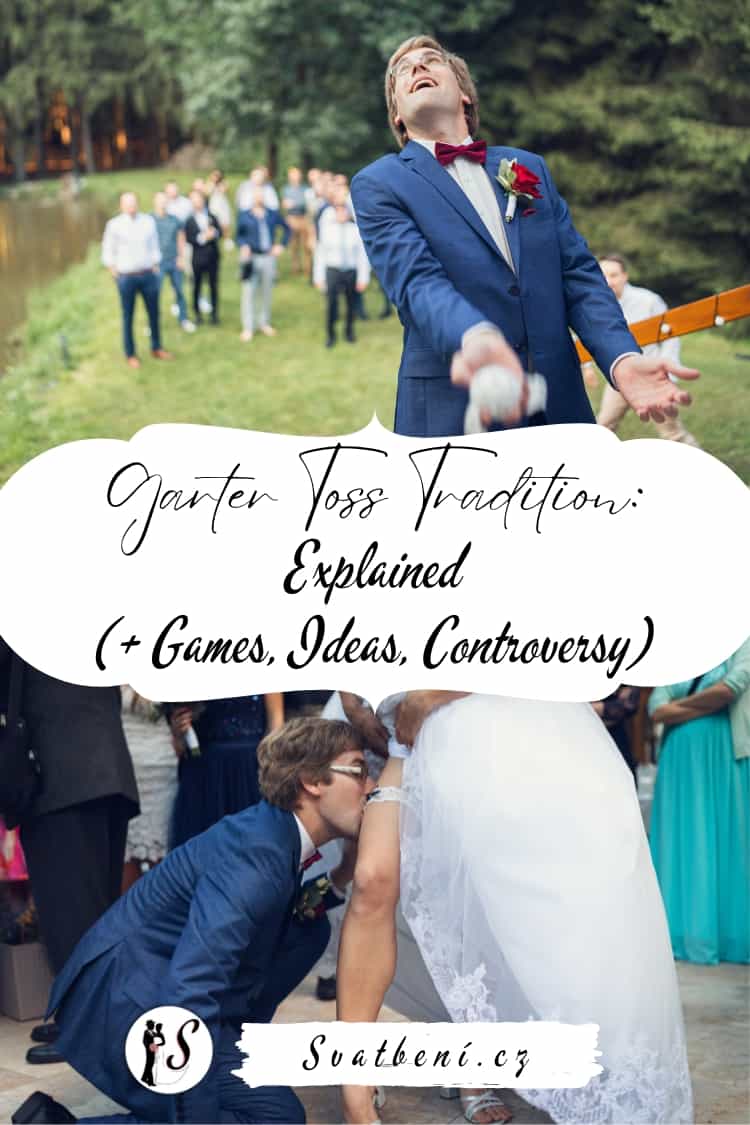
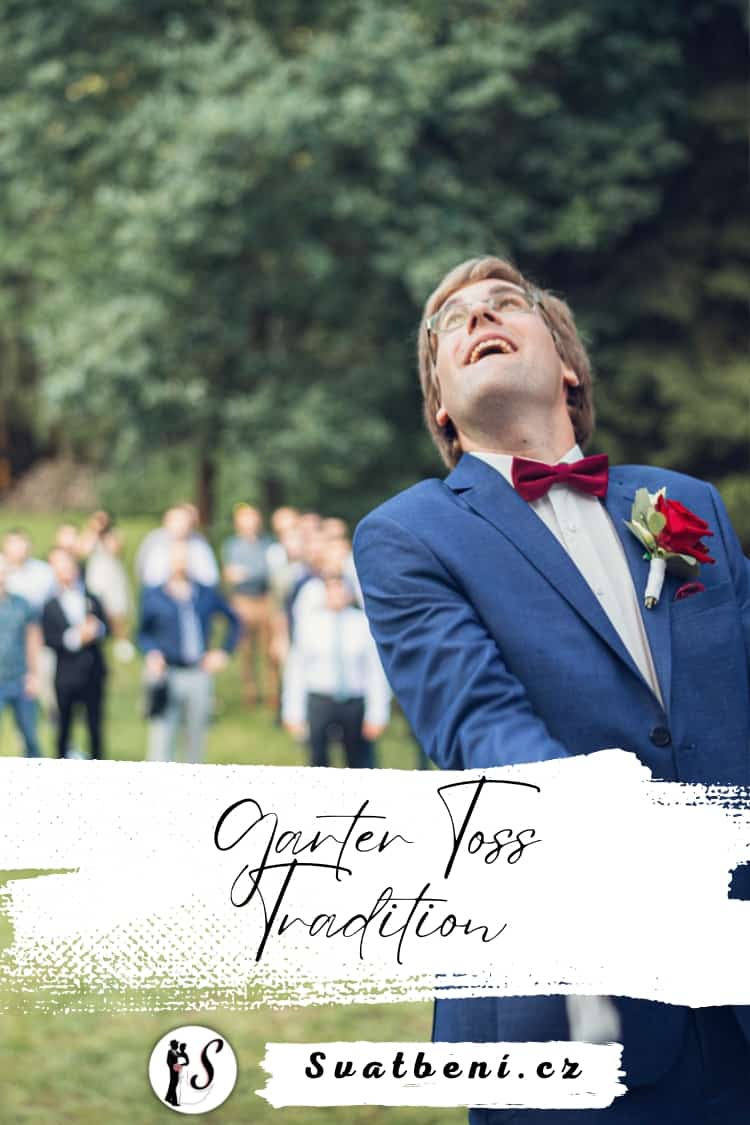
Did you like this article about garter toss tradition? Share them with your friends!

